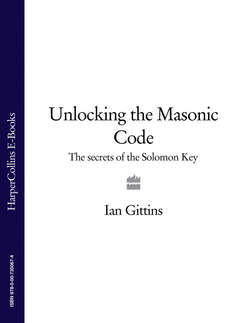Читать книгу Unlocking the Masonic Code: The Secrets of the Solomon Key - Ian Gittins - Страница 16
The Regius Manuscript
ОглавлениеThe Regius Manuscript is one of the most significant documents in Masonic history. Presented to the British Museum by King George II in 1757, it was written in 1390, possibly by a priest, although numerous clues within the text suggest that it was copied from even earlier documents, possibly dating from around 950-1000 AD. Entitled ‘A Poem of Moral Duties’, this 794-line loosely rhyming piece of verse summarized the professional, moral and philosophical levels of behaviour expected of Masons, as well as making some extravagant and fanciful historical claims.
The Regius Manuscript (also called the Halliwell Manuscript after James Halliwell, who translated it from the original Old English in 1840) opens with a Latin inscription: Hic incipiunt constitutiones artis gemetrioe secundum Euclydum. Translating as ‘Here begin the constitutions of geometry according to Euclid’, the motto shows the importance given to the science of geometry in Masonic theory and ritual: after all, these precise calculations enabled the building of their trademark towering cathedrals.
This elongated meditation on spirituality and Masonry (‘the most honest craft of all’) opens with the claim that Euclid, in addition to inventing geometry, was also the first Master Mason and had, indeed, founded the entire Craft in ancient Egypt. Scarcely missing a beat, the poem goes on to claim that Freemasonry was imported to England by King Athelstan, who instigated Masonic meetings and ‘loved this craft full well’.
The poem claims that King Athelstan called a vast meeting of Freemasons from the length of Britain, which was also attended by ‘Lords in their state / Dukes, earls and barons too’. This august assembly drew up the rules and strictures that
